Moroni is the capital of Comoros. The city is known for its picturesque landscapes, volcanic peaks, and pristine beaches.
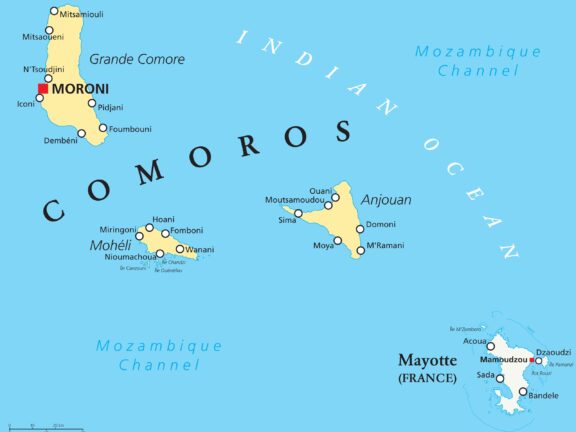
Moroni serves as the country’s political, economic, and cultural center and has a prosperous history influenced by African, Arab, and French cultures, evident in its architecture and local customs.
Where is Moroni?
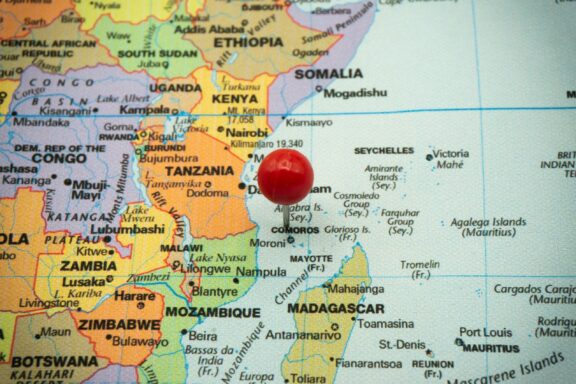
Moroni occupies the western shoreline of Grande Comore, the principal isle in the Comoros chain. Found in the Indian Ocean between Madagascar and Mozambique, this capital city acts as a maritime center for the island.
Its coastal setting has been instrumental for historical trade and connections with nearby islands and distant territories in the Indian Ocean. In Grande Comore’s southern region, Moroni is also close to Mount Karthala, an active volcano, making it a natural focal point on the island.
History of Moroni
Moroni started as a small coastal settlement, predominantly a fishing community. It was a place where cultures converged. African, Arab, and Austronesian influences intermingled to shape the early societal structures, religious beliefs, and trade networks.
Arab traders, in particular, introduced Islam to the island, and their influence is still seen in Moroni’s architecture and religious practices today.
The French arrived in Comoros in the 19th century and soon incorporated it into their colonial empire. Under French rule, Moroni saw a transformation in its infrastructure and governance. The French built roads, administrative buildings, and other facilities that led to urbanization.
The city became the administrative center, where French colonial authorities based their operations, and the colonial period also brought European influences into the local culture and architecture.
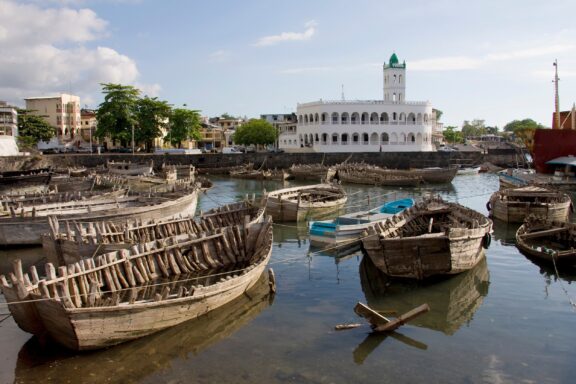
Comoros became independent in 1975, and Moroni was chosen as the capital. The years following independence were tumultuous; the city saw a series of coups, political unrest, and governance challenges.
The instability had a significant impact on Moroni’s development. Despite these challenges, the city remained the seat of government and the location for several foreign embassies, reflecting its importance on both a national and international level.
In the contemporary period, Moroni faces a myriad of challenges and opportunities. On the one hand, the city grapples with political instability, underdevelopment, and the threat of natural disasters such as cyclones and volcanic eruptions from nearby Mount Karthala.
On the other hand, there has been a concerted effort to modernize the city. Education, healthcare, and tourism investments are slowly transforming Moroni into a more developed urban center.
Features of Moroni
Moroni captivates visitors and residents with its unique natural beauty and cultural richness blend. The city’s architecture is also fascinating, reflecting its multi-layered history, where traditional Islamic designs coexist with French colonial structures, creating a skyline that tells a story of confluence and change.
Geography and Climate
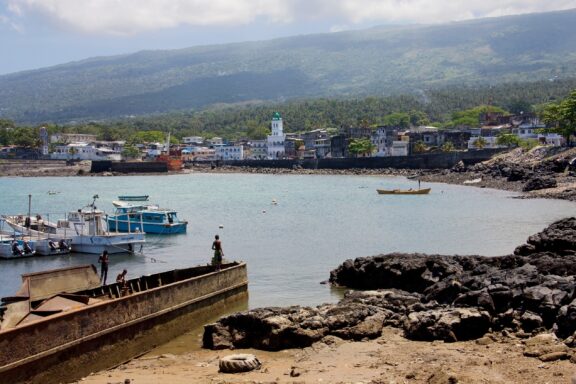
Moroni enjoys a tropical maritime climate with warm temperatures and high humidity throughout the year. The city experiences two main seasons: a hot, rainy season from November to April and a cooler, dry season from May to October.
Due to its proximity to Mount Karthala, the soil around Moroni is fertile, although the risk of volcanic activity is an ever-present concern.
Population
The population of Moroni is ethnically diverse, reflecting its rich history of African, Arab, and European influences. Most of the population is of Comorian descent, but there are also small communities of French, Arab, and other ethnicities.
The city is predominantly Muslim, and Islamic practices and festivals are integral to the community’s way of life. The population is relatively young, with many residents under 30.
Economy
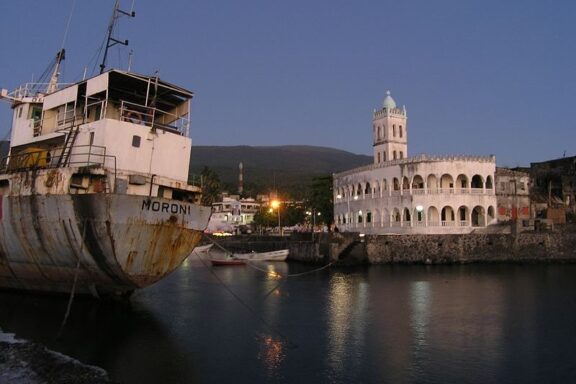
Moroni plays a pivotal role in the economy of Comoros, being the principal city where governmental and economic activities are centered. The port in Moroni is a crucial hub for imports and exports, facilitating trade mainly in agricultural products like vanilla, cloves, and ylang-ylang, an essential oil used in perfumery.
Fishing is another important industry, providing both local sustenance and export income. Over the years, tourism has started to play a growing role, although it is still in the nascent stages of development.
However, like the rest of Comoros, the city faces economic challenges, including limited natural resources, political instability, and corruption which impact its financial health. Nonetheless, Moroni remains the heart of economic activities in the country, and efforts are underway to diversify its economy and foster growth.
Things to Do and Places to See in Moroni
When visiting Moroni, you’ll find a variety of appealing destinations that captivate tourists. Here are some of the most frequented spots:
1. Iconi Mosque
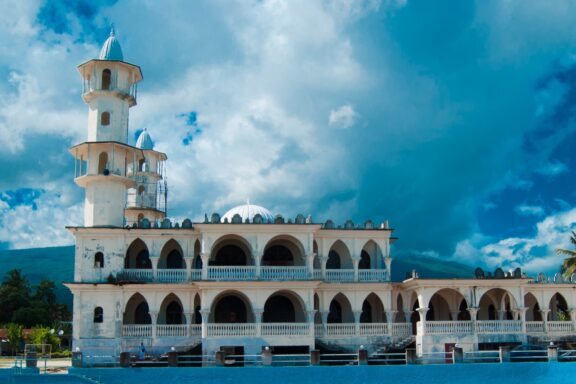
Iconi Mosque is located just a few kilometers away from Moroni,. Established many years ago, the mosque serves as a significant focal point for religious observance and community interactions. Over the years, it has represented the harmony and unity underpinning the local culture.
The mosque welcomes tourists interested in understanding Comoros’s religious and cultural fabric. Visitors can observe prayer sessions and perhaps listen to an Islamic lecture. Additionally, the welcoming nature of the local community offers an enriching cultural experience.
2. Karthala Volcano
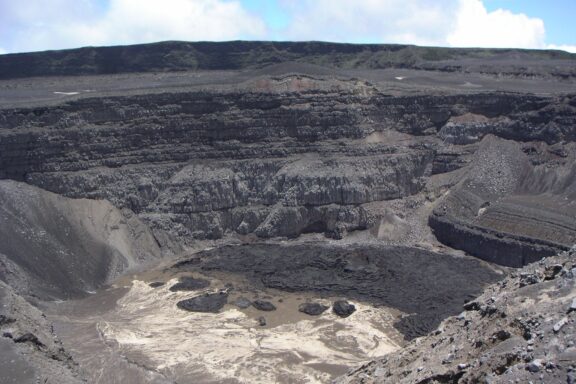
Karthala Volcano is an awe-inspiring natural phenomenon. As one of the world’s most active volcanoes, it attracts scientists, nature enthusiasts, and thrill-seekers from all over the globe.
Karthala stretches upwards to an elevation of 2,361 meters, and its caldera is among the world’s largest. Nature trails lead you through different ecosystems, from lush forests at the base to rocky terrains as you ascend.
3. Moroni Beach
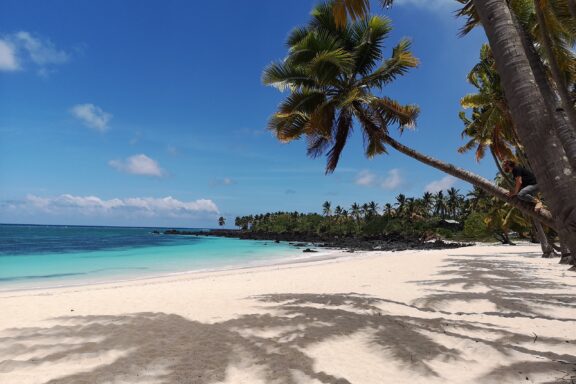
Moroni Beach, situated along the coastline of the capital, is more than a place for relaxation; it’s a cornerstone of local life, drawing families, fishermen, and tourists alike. The beach features golden sands stretching along the coastline, met by the turquoise waters of the Indian Ocean.
Amenities include small eateries serving local seafood, shaded areas provided by palm trees, and opportunities for water sports. Apart from soaking up the sun and enjoying the ocean, tourists can engage in snorkeling to explore the vibrant marine life, or even join a fishing expedition.
4. National Museum of Comoros
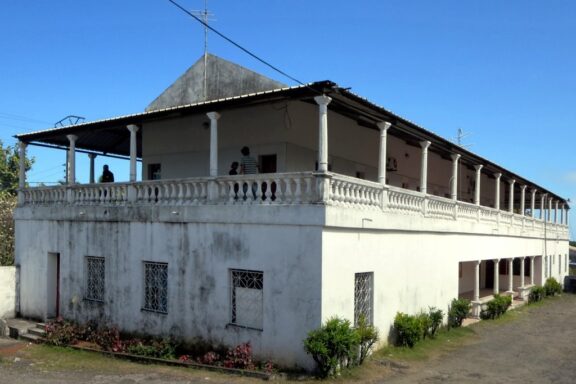
The National Museum of Comoros features various exhibits, from ancient artifacts to contemporary art. The displays are thoughtfully curated, covering topics like natural history, folklore, and the nation’s struggle for independence.
It’s an essential visit for anyone keen on understanding the nuanced history and diversity of the Comoros Islands. Interactive exhibits and guided tours make it accessible for visitors of all ages.
5. Ruins of Sultan’s Palace
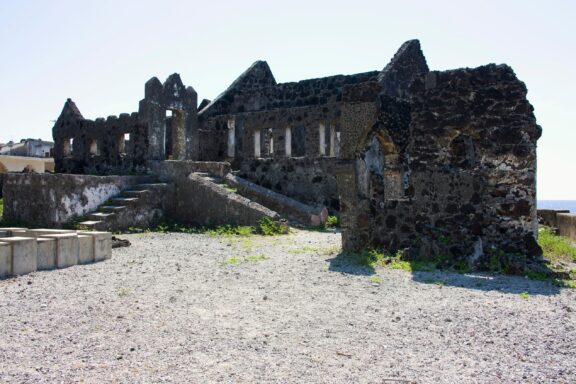
The Ruins of the Sultan’s Palace are steeped in intrigue and grandeur. Once a symbol of power and luxury, the palace today offers a contrasting image of decay and historical change. The ruins include sections of high stone walls, archways, and partially intact chambers.
Vegetation has reclaimed some areas, lending an atmospheric mix of man-made and natural elements. Despite its dilapidated state, the structure still exudes an aura of its past significance.
Frequently Asked Questions
What is the best time to visit Moroni?
The best time to visit Moroni is during the dry season, which runs from May to October when the weather is cooler and less humid.
How do I get around the city?
Public buses and taxis are available for getting around Moroni. Renting a car is also an option but less commonly used.
Is Moroni safe for tourists?
Crime levels in Moroni are low. However, it’s advisable to take sensible precautions against pick-pocketing and mugging. Avoid walking alone at night on beaches or in town centers.
What is traditional food like in Moroni?
The traditional cuisine in Moroni is a blend of African, Arab, and French influences, mirroring the city’s diverse history. The island’s abundant natural resources contribute to a diet rich in seafood, tropical fruits, and spices.
Coconut and rice are staple ingredients, and the city’s position as a historical trading hub has infused its cuisine with multiple spices like vanilla, cloves, and cardamom.
What are must-try authentic local dishes in Moroni?
If you’re visiting Moroni, your culinary experience won’t be complete without trying these authentic local dishes:
1. Langouste à la Vanille: A lobster dish flavored with vanilla, showcasing the island’s famous spice.
2. Mkatra Foutra: A pancake-like bread made with coconut milk and flour, often served as a side.
3. Pilao: A spiced rice dish, often cooked with meat or fish, similar to pilaf or biryani.
4. Poutou: A sweet treat made from coconut and rice flour, usually served as a dessert or snack.
Are there any specific cultural norms or practices I should be aware of?
Moroni is predominantly Muslim, so it’s advisable to dress modestly. Also, observe local customs during Islamic holidays like Ramadan.
How can I get to the nearby islands or other parts of Comoros?
Ferries and flights to other islands are available, but schedules can be irregular, so it’s best to plan.
Is English widely spoken in Moroni?
English is not widely spoken in Moroni. The most commonly spoken languages in the city are Comorian and French.
Final Thoughts
From its scenic landscapes framed by the Indian Ocean and Mount Karthala to its diverse culinary offerings and warm community, the city provides a unique experience that defies easy categorization.
If you’re looking for a destination that offers more than just picturesque views—a place that presents a tapestry of old and new experiences—Moroni is undoubtedly worth a visit.
Image Sources and Copyright Information
- Map of Comoros Islands in the Indian Ocean: © Peter Hermes Furian/Shutterstock
- Map with Pin on Moroni, Comoros: © evan_huang/Shutterstock
- Boats and Mosque by the Waterfront: © Altrendo Images/Shutterstock
- Coastal Town with Boats and Volcanic Rocks: © Altrendo Images/Shutterstock
- Ship and Buildings at Moroni Harbor at Dusk: © Daryl Wallace/Flickr
- White Mosque with Blue Sky: © Enrico Romiti/Shutterstock
- Karthala Volcano Crater: © Daryl Wallace/Flickr
- Tropical Beach with Palm Trees: © Vagabjorn/Shutterstock
- Colonial-style building with balcony: © David Stanley/Flickr
- Ruins of a Sultan’s Palace: © Altrendo Images/Shutterstock